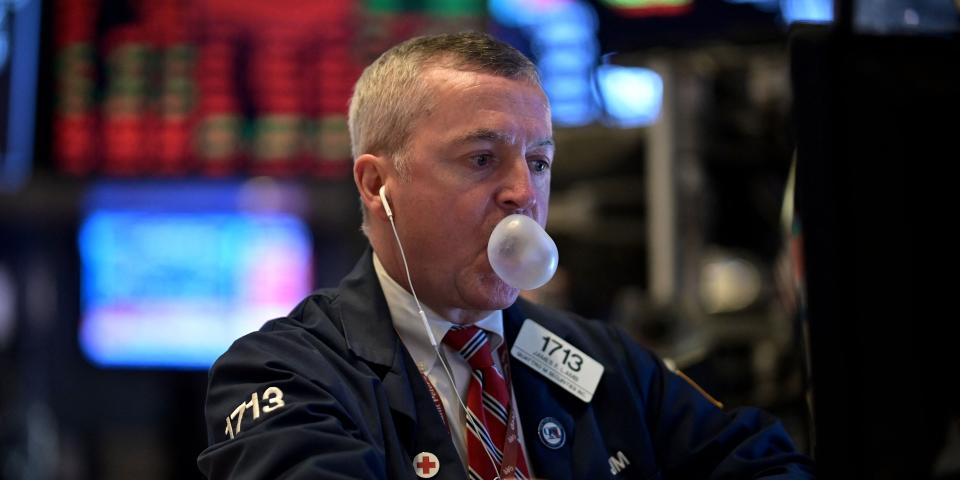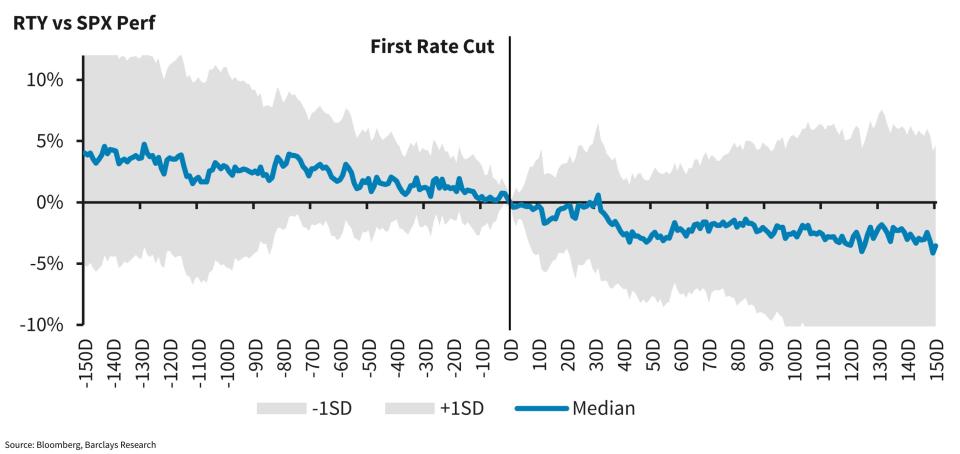
-
Small-caps historically decline before and after the first interest rate cut, Barclays reported.
-
This argues against the growing narrative that the easing cycle will boost small-caps, the bank said.
-
Wall Street is divided on whether the sector’s rally can continue.
Small-caps are getting new love on Wall Street, but not much supports the expectation for the sector to surge, Barclays wrote.
In fact, strategists led by Venu Krishna found that the small-cap-tracking Russell 2000 typically declined once rate cuts started.
“We think this argues against the popular narrative that the start of a rate cutting cycle signals a sustainable uptrend for small caps vs. large caps,” the note said.
The authors compared the Russell’s performance to the S&P 500 through 13 easing cycles from 1980 to 2020. Although the note acknowledged a range of outcomes, a broad downtrend was evident in the 150 days before and after the first cut.


Their finding opposes many prevailing viewpoints on Wall Street, where rising bets of lower interest rates have sent investors piling into the small-cap trade. Last Thursday, the Russell rose 3.6%, even as the tech-heavy NASDAQ shed 2%.
Many expect these stocks to benefit from lower borrowing costs, given their high debt exposure. The rotation into small-caps was first sparked by June’s surprisingly cool inflation report, which bolstered confidence that the Federal Reserve would slash rates as soon as September.
The Russell faces 40% upside by August, given how oversold its assets have been, Fundstat’s Tom Lee predicted this week.
But Barclays outlined why this might not be the case historically. In part, falling interest rates might help ease debt burdens, but they can also signal a cooling economy — which favors large-cap exposure.
“Small caps also continue to face numerous other headwinds, including forward EPS revisions that lag those of their large-cap peers, higher volatility (which is out of favor when the yield curve is exiting inversion and in election years), and heightened vulnerability to trade tensions despite a more domestic sales focus,” Barclays wrote.
Skeptics agree. Market veteran Ed Yardeni wrote this week that the small-caps trade has no legs, given the sector’s lackluster forward earnings, revenue, and profit margins.
Meanwhile, others acknowledged the rally but questioned its staying power.
“As the Fed embarks on a rate cutting cycle, markets tend to cheer it initially and even for a short period after the cuts begin. But if that cutting cycle occurs in concert with slowing economic data, disappointing earnings, or a quick compression in multiples, small-caps would likely lose steam quickly,” SoFi’s head of investment strategy Liz Young Thomas said in written commentary.
She added: “Not to mention, the Fed typically cuts rates late in the economic cycle, not early in the cycle when small-caps tend to have their moment in the spotlight.”
Read the original article on Business Insider















